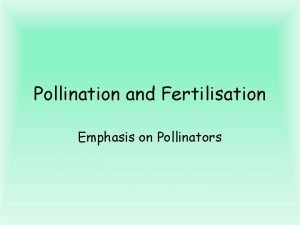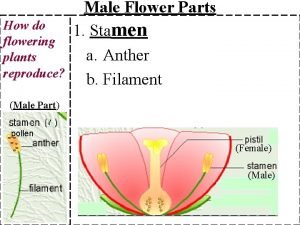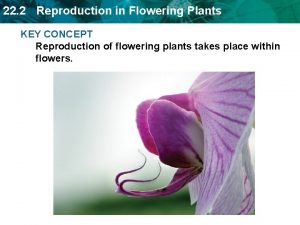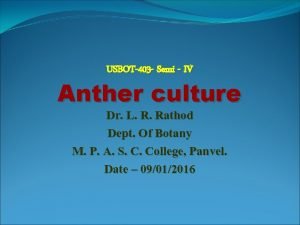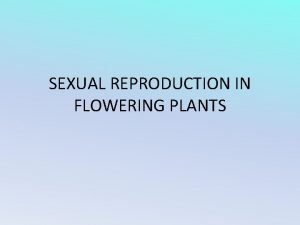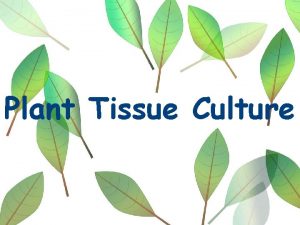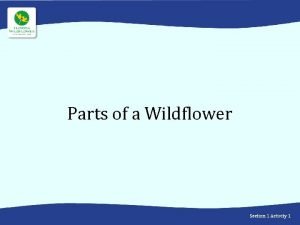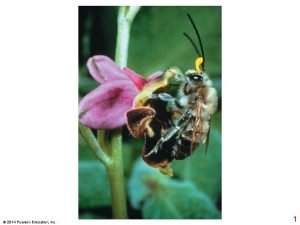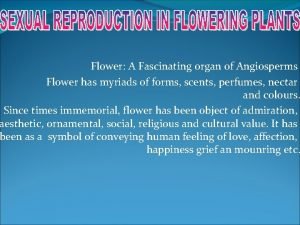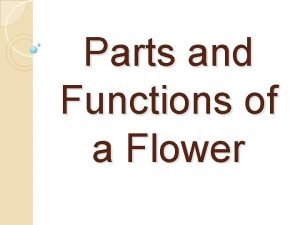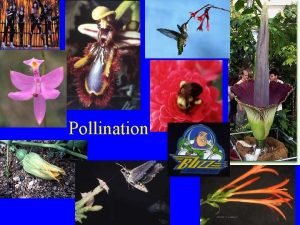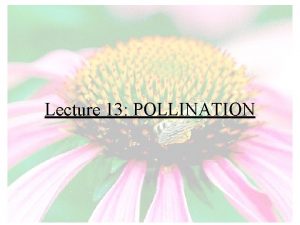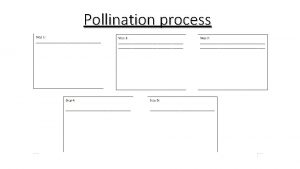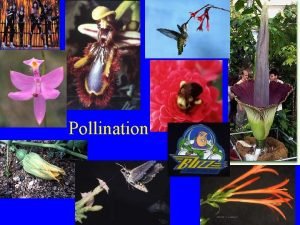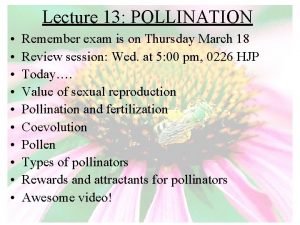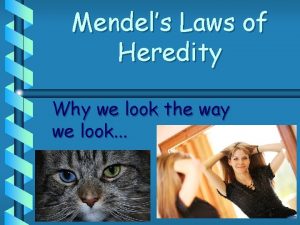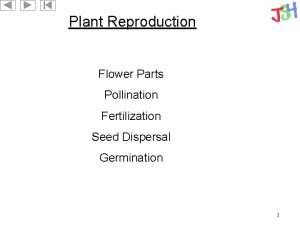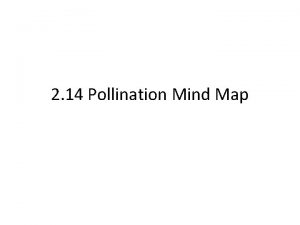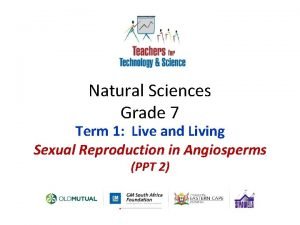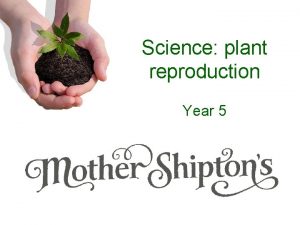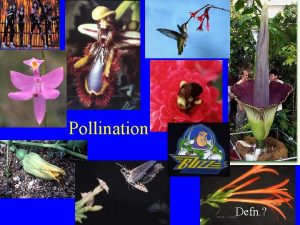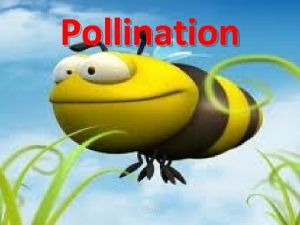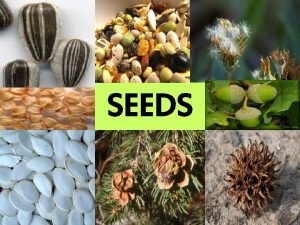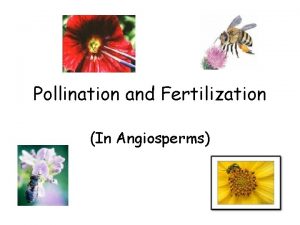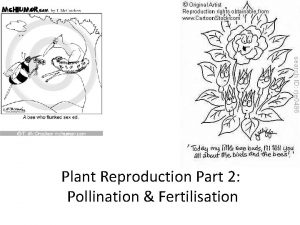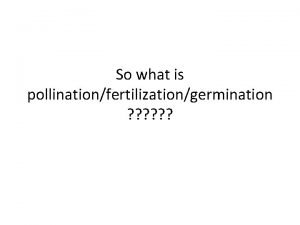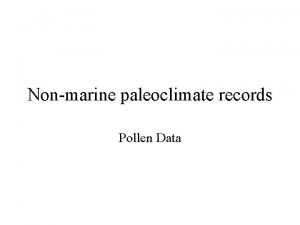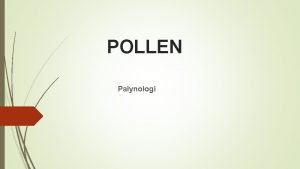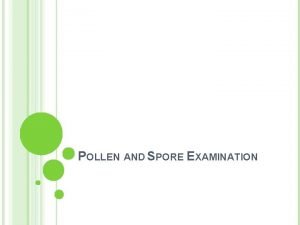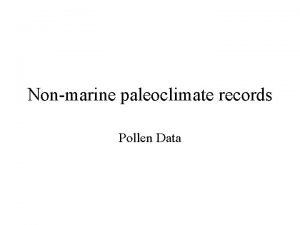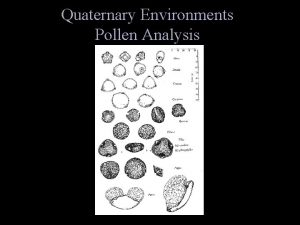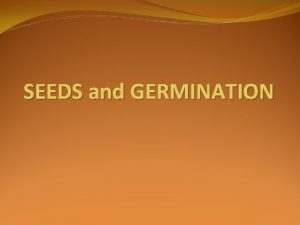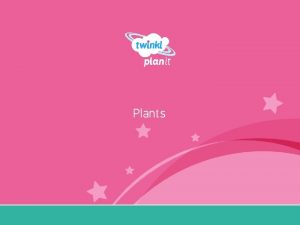Pollination The transfer of pollen from the anther






















- Slides: 22

Pollination – The transfer of pollen from the anther to the stigma.

Fertilization – The formation of a seed by the uniting of a sperm nucleus from a pollen grain with an egg cell.

Nectar – a sweet liquid usually stored in the base of the blossom.

Self Pollination – When a plant is able to pollinate itself.

Cross Pollination – When pollen is carried from one plant to another.

Pollen Tube – grows from the pollen’s location on the stigma through the style and into the ovary after pollen is attached to the stigma.

Sperm Nucleus – divide from the pollen grain to form two sperm nuclei. One slides through this tube and unite with the egg cell in the ovule during fertilization.

The other helps in the production of food storage tissue which will be used later by the developing plant.

The fertilized egg is called the embryo, and is the beginning of a seed

Embryo – A miniature plant made when one of the sperm nuclei unites with the egg.

Plumule – A tiny shoot of the embryo that will become the stem of the new plant.

Radicle – A small root in the embryo that will develop into the root system in the new plant.

Cotyledons – Structures designed for food absorption and storage.

Endosperm – Stored food for the plant.

Seed Coat – A tough outer covering that protects the embryo and endosperm.

Germination – The early growth of a seed. The seed coat must be softened by moisture before this can occur.

Monocotyledons – Plants who seeds only have one cotyledon and absorb the endosperm during germination. Corn and Wheat are examples.

Dicotyledons– Plants whose seeds have two cotyledons, and the endosperm is absorbed before the seed leaves the parent plant. Beans, peas, and peanuts are examples.

Fruit – When the ovary ripens, it is anything that forms from the ovary of a flower.

Dispersal – Scattering or distributing of seeds after they are mature.

Mechanical Dispersal – Occurs when the ripened fruit bursts open and scatters seeds some distances from the plants.

Agent Dispersal – Birds and other animals act as dispersal agents by feeding on fruits and the seeds are scattered by the animal before they eat them, or pass through an animal’s digestive system unharmed.
 Self pollination
Self pollination Parts of a female flower
Parts of a female flower Pollination occurs when a pollen grain
Pollination occurs when a pollen grain Anther culture definition
Anther culture definition In hibiscus gynoecium is
In hibiscus gynoecium is Types of plant culture
Types of plant culture Anther clipart
Anther clipart Inc
Inc Cross section of anther
Cross section of anther Function of flower anther
Function of flower anther Pollinate definition
Pollinate definition What is a pollinator
What is a pollinator Difference between endosperm and cotyledon
Difference between endosperm and cotyledon Describe the picture
Describe the picture Pollination process
Pollination process Pollination syndrome
Pollination syndrome Pollination
Pollination Pollination experiment
Pollination experiment Female parts of a flower
Female parts of a flower Pollination mind map
Pollination mind map Pollination
Pollination Pollination grade 7
Pollination grade 7 Pollination fertilisation seed dispersal germination
Pollination fertilisation seed dispersal germination
